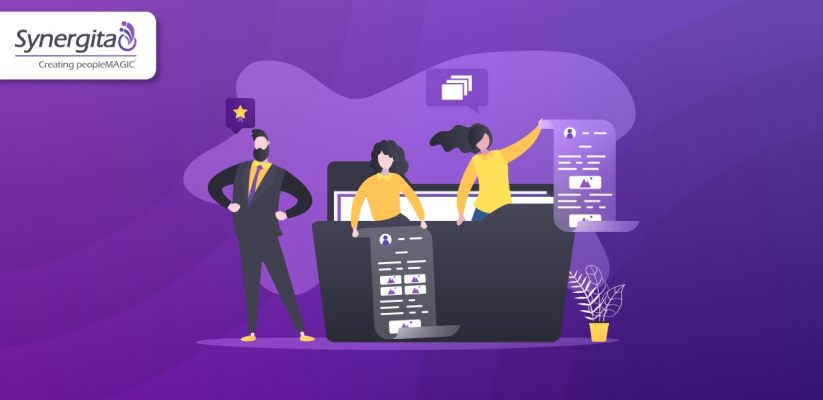Why Should Your Employee Experience Be Organised As Carefully as Your Customer Experience?
In a world of online reviews, ratings, and stars, delivering a remarkable customer experience becomes the ultimate goal for any brand. Every day, there’s a brand-new video either showing a customer/employee conflict, an employee failing to uphold the company’s values, or occasionally an employee wowing the customer.
These days, anyone with a smartphone and access to the internet can become an investigative journalist. And in some ways, this has been positive. However, for business executives, all it means is that every customer encounter may end up on Facebook, Instagram, and Twitter—well, you get the picture.
But remember, an employee is always at the core of that customer experience. Ignoring employee experience can have long-lasting repercussions. In this digital world where millennial influence is growing, employees demand a productive, engaging, and pleasant work experience.
Importance of Employee Experience for Managers
According to a recent employee experience survey published by Deloitte University Press, nearly 80% of CEOs consider employee experience significant. Employees who are content, engaged, and have a positive experience are capable of doing their work productively and efficiently. This, in turn, helps achieve overall corporate objectives.
Several other factors must be considered when building and managing a high-performing workforce. And with this new generation of employees prepared to seize opportunities in this gig economy, everything from hiring and onboarding to training, career development, and employee recognition come under scrutiny.
How Customer Experience and Employee Experience go hand-in-glove
Some of the most customer-centric companies in the world have succeeded in improving the customer experience by prioritising their employees. Businesses such as Zappos and Ritz-Carlton have prioritised employee empowerment and happiness in providing exceptional customer experiences and enhancing customer retention.
However, businesses cannot develop customer retention strategies overnight. For a company and its employees, customer retention strategies are long-term investments.
Financially speaking, a customer retention strategy could entail using new technologies or hiring customer experience professionals. It could also include ensuring employees know their roles in the customer experience and how they can enhance the customer journey. Employees are more likely to support the customer retention strategy and contribute to longer-lasting effects when they are mindful of their impact.

Why should businesses organise Employee Experience to retain employees and customers
In a nutshell, putting people first is the cornerstone of a great employee experience.
The way the company prioritises employee needs will determine their relationship with employers, the amount of effort these employees will put into the company’s expansion and the level of service they will offer customers.
Customer satisfaction and employee productivity are two significant benefits. There are other reasons to organise employee experience, which include
1. Attracting and retaining talent
As you chart your employees’ journey with your organisation, start by establishing trust at the interview stage and keep building on it.
2. Increasing revenue growth
A sense of purpose leads to better employee performance and productivity,
which drives an increase in revenue.
3. Enhancing employee engagement
Businesses that have increased employee engagement have seen an increase in employee satisfaction, talent attraction, and brand loyalty.
4. Improving employee retention
Businesses that prioritise employees have higher retention rates and receive awards for being the best places to work.
5. Augmenting customer growth
Improved customer experience results in satisfied and more loyal customers.
6. Better employee expertise
Employees have more time to develop their expertise the longer they are in a company. They can grasp organisational intricacies and processes that new hires cannot grasp quickly.
Employers today are aware of how important it is to keep employees happy. To do this, however, businesses must choose the best employee experience tool for their unique requirements.
How Employee Experience Tools can grow businesses
An employee experience tool is a software that helps businesses maintain a positive workplace culture with highly engaged employees. Such an employee experience tool can aid employees in producing better work by tracking productivity and performance with the appropriate features.
Key features of Employee Experience Tools:
Real-time Feedback: Quick two-way communication can hasten problem-solving and advance business objectives. In real-time, employees and managers can communicate ideas, problems, and developments about particular goals.
Employee reports: Analytics that provide management with a clear understanding of problems that require attention.
Rewards and Recognition: Integrating rewards and recognition into the employee experience tool can create an enriching, rewarding, and respectful work environment.
Just as your customers demand fantastic experiences across all devices and apps, your employees want business technology that supports their day-to-day tasks. You can reduce employee irritation with out-of-date software by updating your legacy systems. This way, your employees will be free to fulfil their potential, and your business can take advantage of all the exciting prospects that digitalisation presents.
The continuous Performance Management Software (PMS) from Synergita fosters a unique culture where employees can maximise their potential, raise the standard for excellence, and enhance their productivity. Synergita is an employee experience tool that assists in creating a positive workplace culture. It includes employee recognition, rewards, people analytics, simple integrations, and more.
